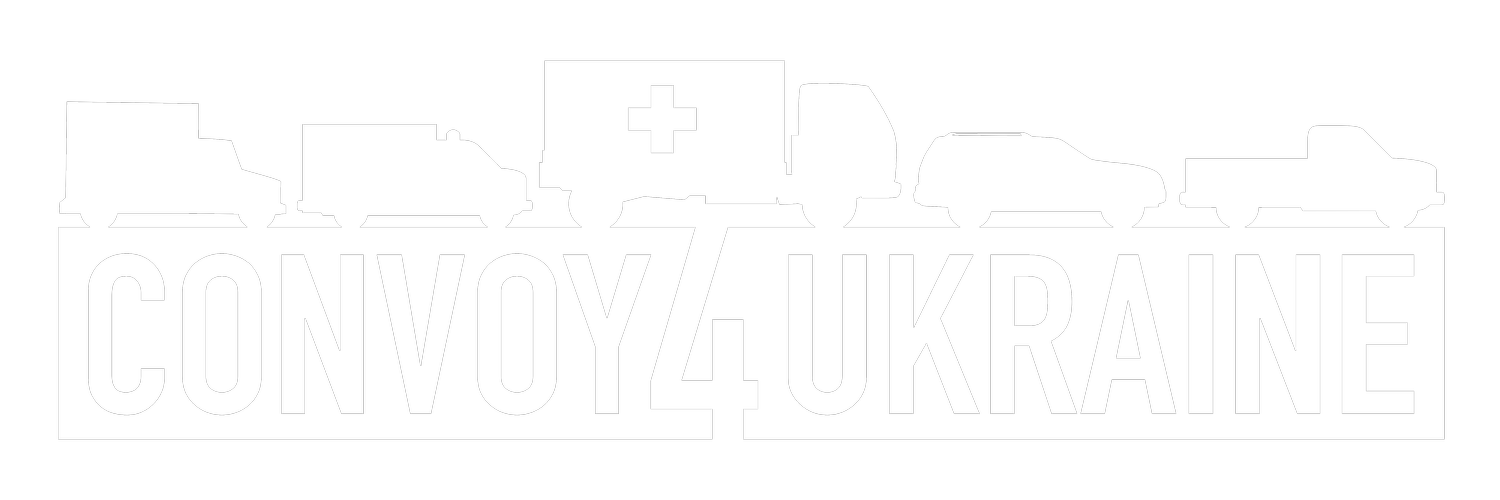
Fundraising
Fundraisers are essential to our organisation and the work we do- without them, we would not be able to get our Ukrainian partners the aid and equipment they need to save lives.
We encourage all kinds of fundraising, and welcome creative ideas to raise awareness about our mission. Whether that’s organising fundraising events, reaching out to your network, or helping us develop corporate sponsorships, we’re happy to give you as much information as you need!
In the past, some of our fundraisers have used platforms like GoFundMe or JustGiving to set up their donations. Find out more about James’ story, one of our volunteers who fundraised as part of his efforts in our March 2024 Convoy
Jamie’s Fundraising
Setting up the page was pretty straightforward. I set it up as an individual fundraiser rather than as an organization (I had been told the commission for withdrawals was lower). You are asked what the purpose of the fundraiser is. When you mention Ukraine, they try to steer you away from setting up a new fundraiser, suggesting that you donate to existing groups, and indicating that your page will be vetted before it goes live. Don’t be put off! In actual fact, the page seemed to go live almost straightaway.
I was prompted to enter bank details for transferring the funds raised but I just ignored that until I had completed all the fundraising. They give you about 4 months to set up an account to withdraw the money or it is returned to donors.
Jamie’s Tips
My tips for creating your page are to give it a snappy title, and a photo, keep the blurb short and snappy, add a personal element if you can, include the name of the group with website url/Instagram address etc. I recommend getting your main points across in the first paragraph. People have short attention spans plus only the first 60-70 words (10 lines) appear when the page first loads. Visitors have to click a link to see the rest of your description.
As for the size of your target, be ambitious. I was surprised at how the fundraiser gained momentum in the second and third week, having never raised more than about £500 for anything before. I initially set my target at £3,000 but reached it within 3 weeks. I then increased my target to 3,500, and ended up with 3,400 from 76 donations. My average donation was £45, the lowest being £5, the highest £200. It all adds up. With hindsight, it might have been better to set the more ambitious target from the start rather than moving the goalposts during the campaign.
As far as timescales go, I set up my page less than 3 weeks before departure day and left it running until the week after, so 4 weeks in total. I felt that 4 weeks was about the minimum time to run the fundraiser. An extra couple of weeks might have worked better. No matter how often you mention it to people, some still procrastinate until the last minute. Also, 6 weeks allows more time for your contacts to reach out to their contacts for donations, amplifying the reach of your fundraising drive.
Spreading the word
Gofundme has a handy built-in feature, which I used, that allows you to share your page with your contacts on social media (Facebook, Instagram, X), or create a physical poster/QR code to hang on noticeboards.
I also went through all my email contacts, selecting people to include in a contact group. I then sent the email to myself (for my records), bcc-ing it to the contact group.
I shamelessly exploited all Whatsapp groups that I am a member of to share my fundraiser e.g. our street’s group.
I also pursued donations in the workplace. One of my biggest donors came from a colleague in another office who I have been in meetings with but never talked to one to one before. Some people will donate because of their relationship with you; some will do it because they care deeply about the cause – you’re just giving them a way to do something to help. Raise awareness during large, general meetings.
Give all communications some sense of urgency or a deadline you are aiming for. Also, encourage alternatives to donating via the gofundme page. Cash/cheque donations are best as no commissions are involved, and work particularly well for older contacts. Gofundme allows you to add donations manually that you received outside their platform to your online total. This is a good way of keeping track of/declaring how much you have raised towards your target. Don’t forget to mention the group along with the url/Instagram address.
Don’t be afraid to contact people more than once. You may have caught them at a busy moment the first time or they simply forgot to make the donation. I tried to catch them on a Friday rather than the start of the week, figuring that they would be more amenable and have time over the weekend to donate or share your fundraiser with their social networks.
I tried to keep those who had already donated engaged by adding regular progress updates (1-2 a week) via posts on my Gofundme page. I found that I got several repeat donations from previous donors, and donations from people in their social networks that they had shared the fundraiser with. Gofundme email your donors any new posts that you add to your fundraising page.
Whenever a donation comes in, you are notified by gofundme. I sent out a thank you note via the platform within 24 hours to every donor. I usually did this once a day at some point in the evening. I felt it was important to thank donors individually and promptly.
Finally, don’t forget to talk to friends, neighbours, colleagues and family about the fundraiser. This helps with the cash donations that save us money in charges.
Good luck!


